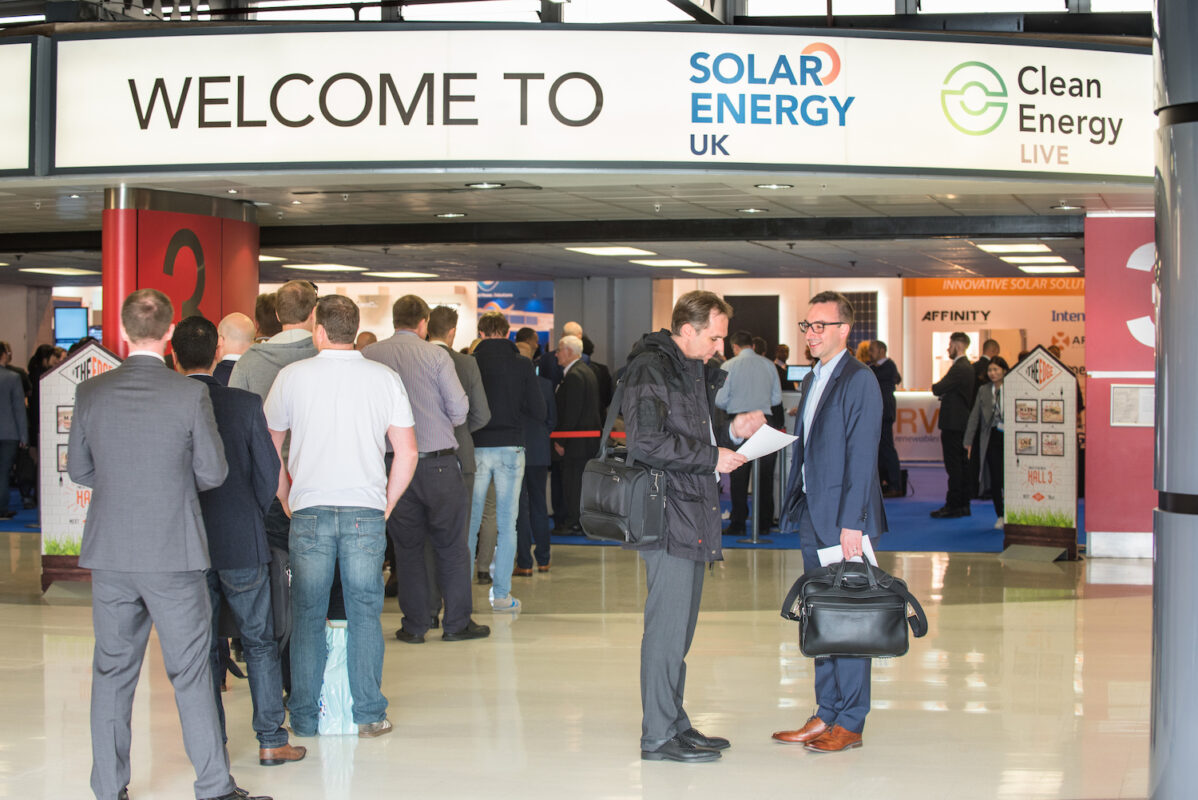
Today is the last day of this year’s Solar Energy UK | Clean Energy Live exhibition and while we’ve still got around seven hours left in the show hall (a little bit less if you slept in following last night’s awards ceremony!), there has been plenty of content and insight to digest over the previous two days. Here are just some of the things that we’ve learned so far.
O&M is a huge opportunity, and one that’s moving fast
While the notion that there will be opportunities for O&M providers is not exactly a scintillating revelation – with over 12GW of solar installed, much of which in the last two years, that was always going to be the case – but O&M has proven to be such a big topic of discussion at this year’s show that it has been hard to ignore. Providers have maintained a significant presence on the show floor and indeed in these daily newspapers. But there have been cautionary tales to heed. We’ve learned so far that the market will be cut throat as suppliers look to grab scale while it’s available, and that those providers are constantly approaching it from innovative angles in an attempt to steal a march on their rivals. We’ve even heard of some companies now going back to favouring the use of livestock such as sheep for grounds maintenance, purely because they are a significantly cheaper option than bringing in an army of strimmers and mowers – and it’s those savings that can be passed on to potential clients. Watch this space.
The best Brexit is anyone’s guess
REA chief Nina Skorupska was in particularly boisterous form during her keynote session on Wednesday morning looking at how Brexit might impact the energy market. And quite right too, as she indicated during her speech, it remains unclear whether energy is even in the top five priorities for the government to address as the UK lurches towards a clean break. Which, when you consider that the UK still imports a significant amount of its electricity, is a sobering prospect indeed. With so much uncertainty hanging over the renewables industry already, the last thing it needed was such an about turn in political procedure. But that is exactly what July’s referendum vote has posed and everything is now up in the air. As one installer said on the show floor, “talk about self-inflicted wounds!”
The panel price curve – and the repercussions – will make for interesting viewing
Analysis presented by Solar Media’s own Finlay Colville on the opening day showed that panel prices are expected to hit circa $0.35c per watt by Q2 2017, which is now just six months away. Cost reductions are, thankfully in light of the retraction of government support, showing no signs of abating. And with the fate of the Minimum Import Price set to be decided by March next year, we could be looking at the prospect of an even greater slide. But what impact – if any – will that have on the average installer or developer? Many have said it would be marginal due to how panel costs are an ever diminishing percentage of a total install, but the industry will still be relieved to see costs still tumbling. Could the fabled grid parity be within touching distance?
Big corporates are waking up to the energy challenge
Commercial end users were a big topic of discussion, and it’s reasonable to expect that every installer in the country wants to be connecting with them to discuss solar’s potential. There’s now growing evidence however that convincing them of the power of renewables is no longer a challenge. Lightsource has said that its finding a lot more leads starting to trickle through for commercial installs, and one installer pretty much summed up the perfect pitch to a finance director. Paraphrasing slightly, he said that how else would you be able to add tens of thousands of pounds to your top line through a proven solution, because even if your business has a margin of around 10%, that will still require hundreds of thousands of pounds in additional sales. Renewables is aptly placed to deliver just that. And it’s not just in that field wherein big companies are embracing the low-carbon transition. We heard on Tuesday one major energy supplier predict that a Google, Apple or Amazon will enter the energy supply space within the next five years, all of which have significant renewable assets currently only used to power their offices or server centres. It might not be long until you open up your Amazon account or iTunes and pay your energy bill too.

